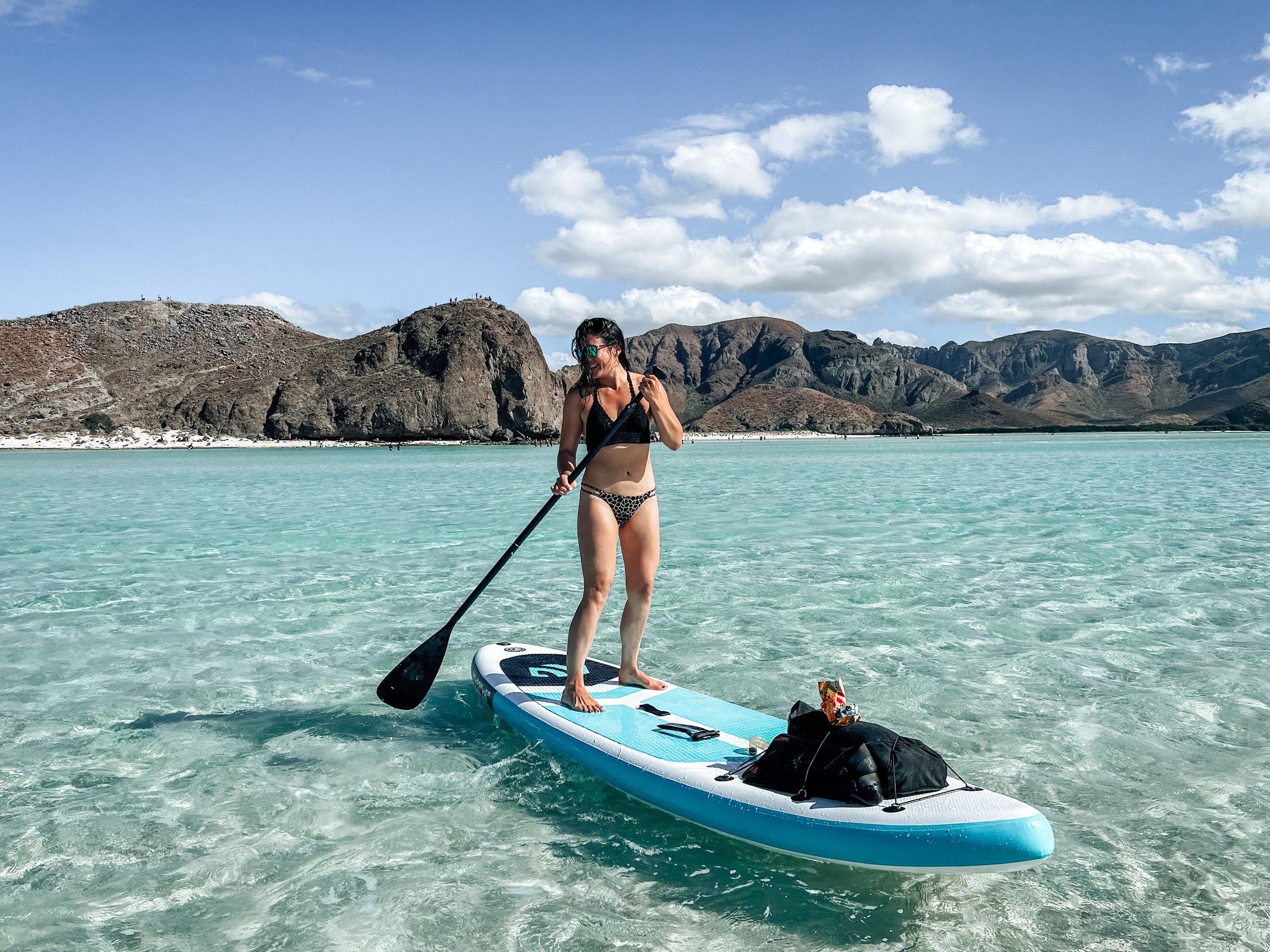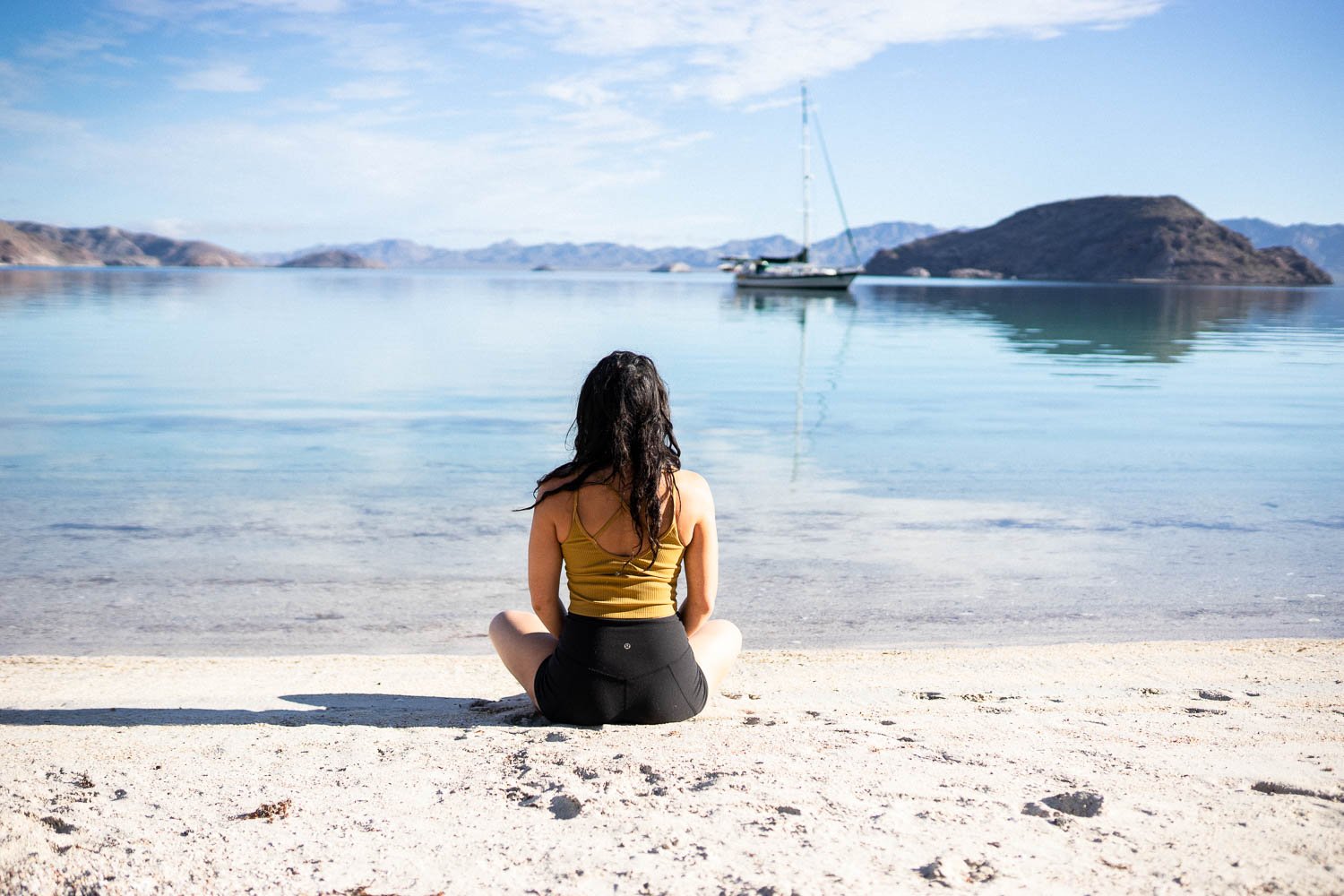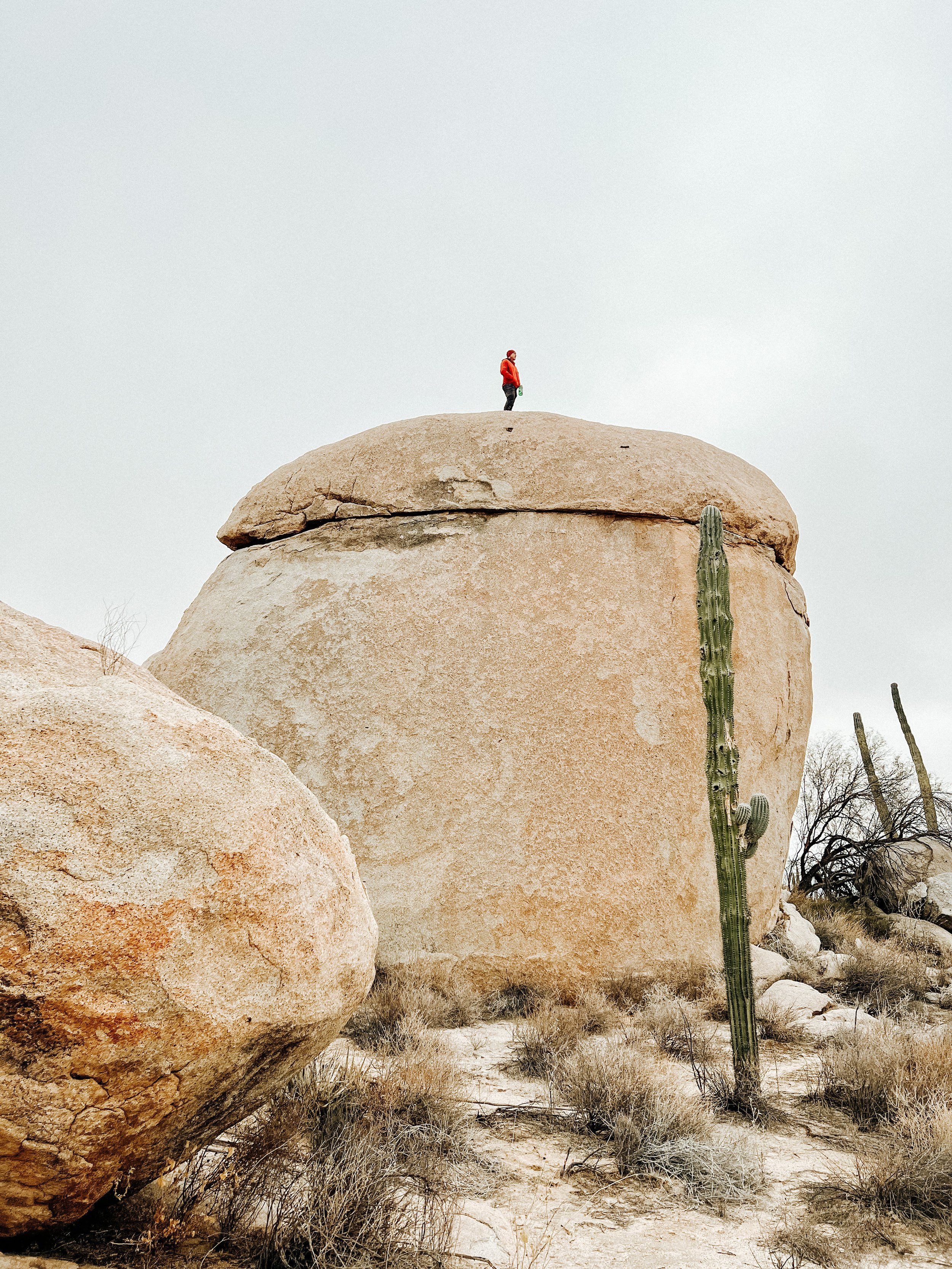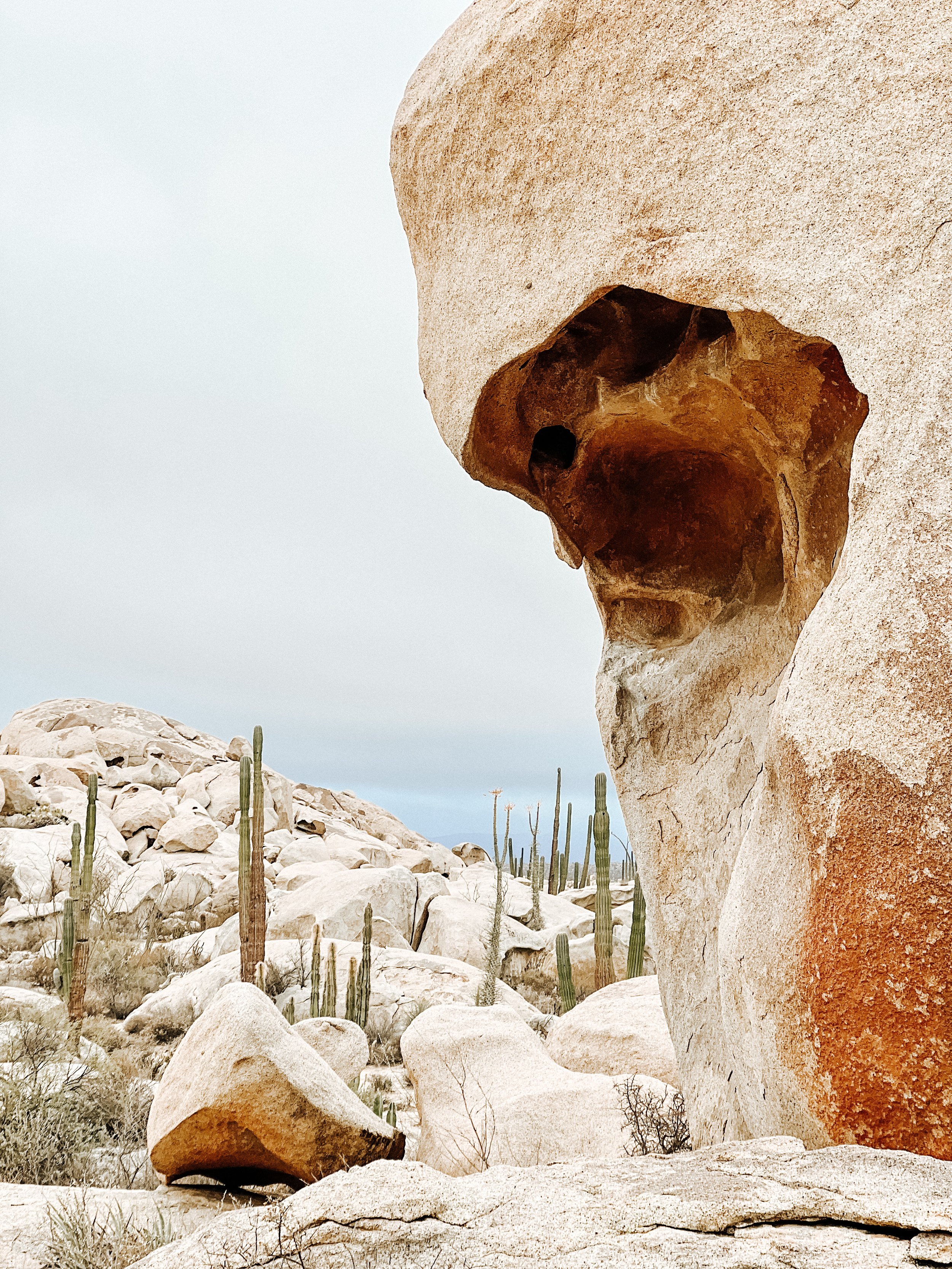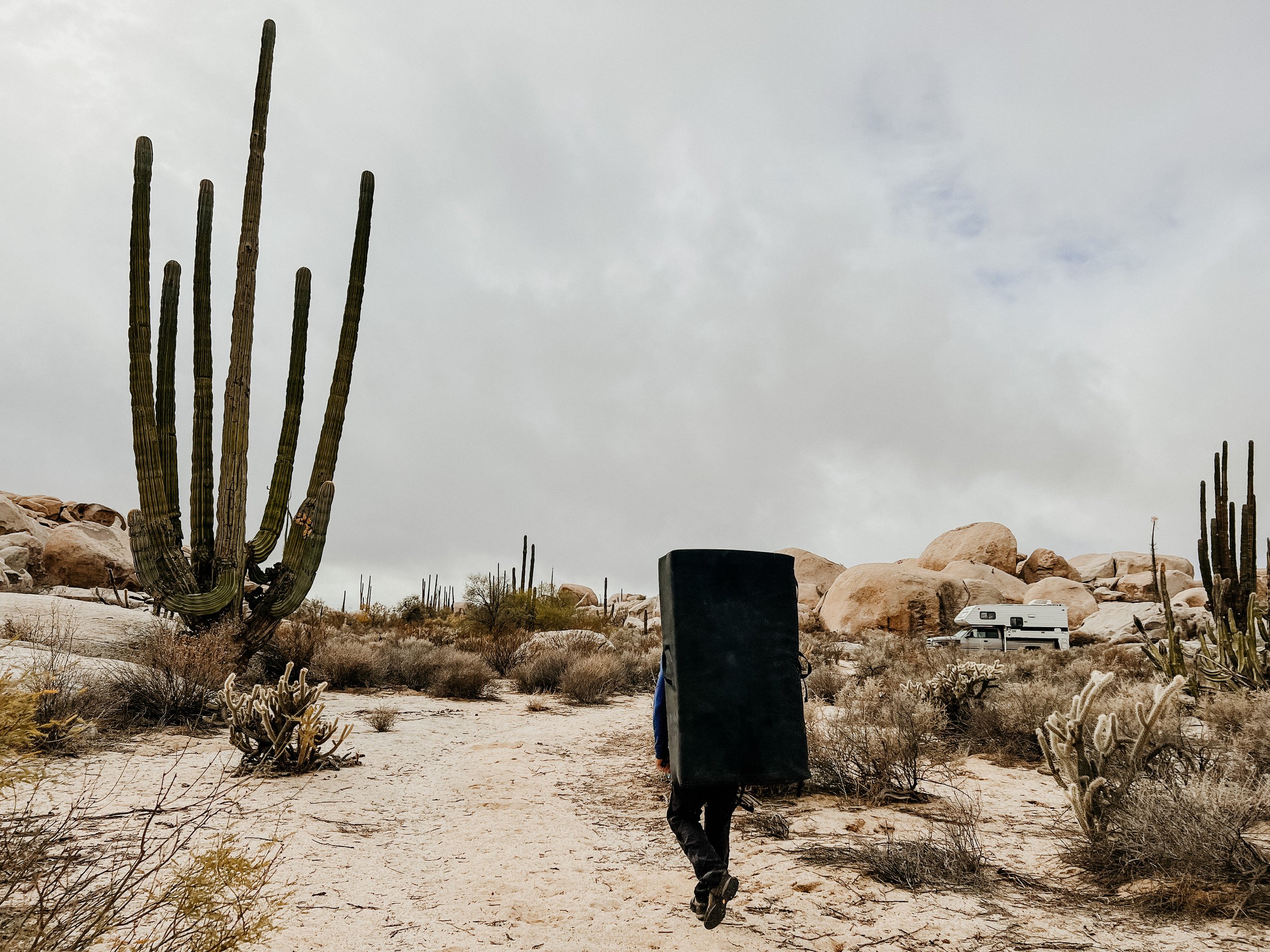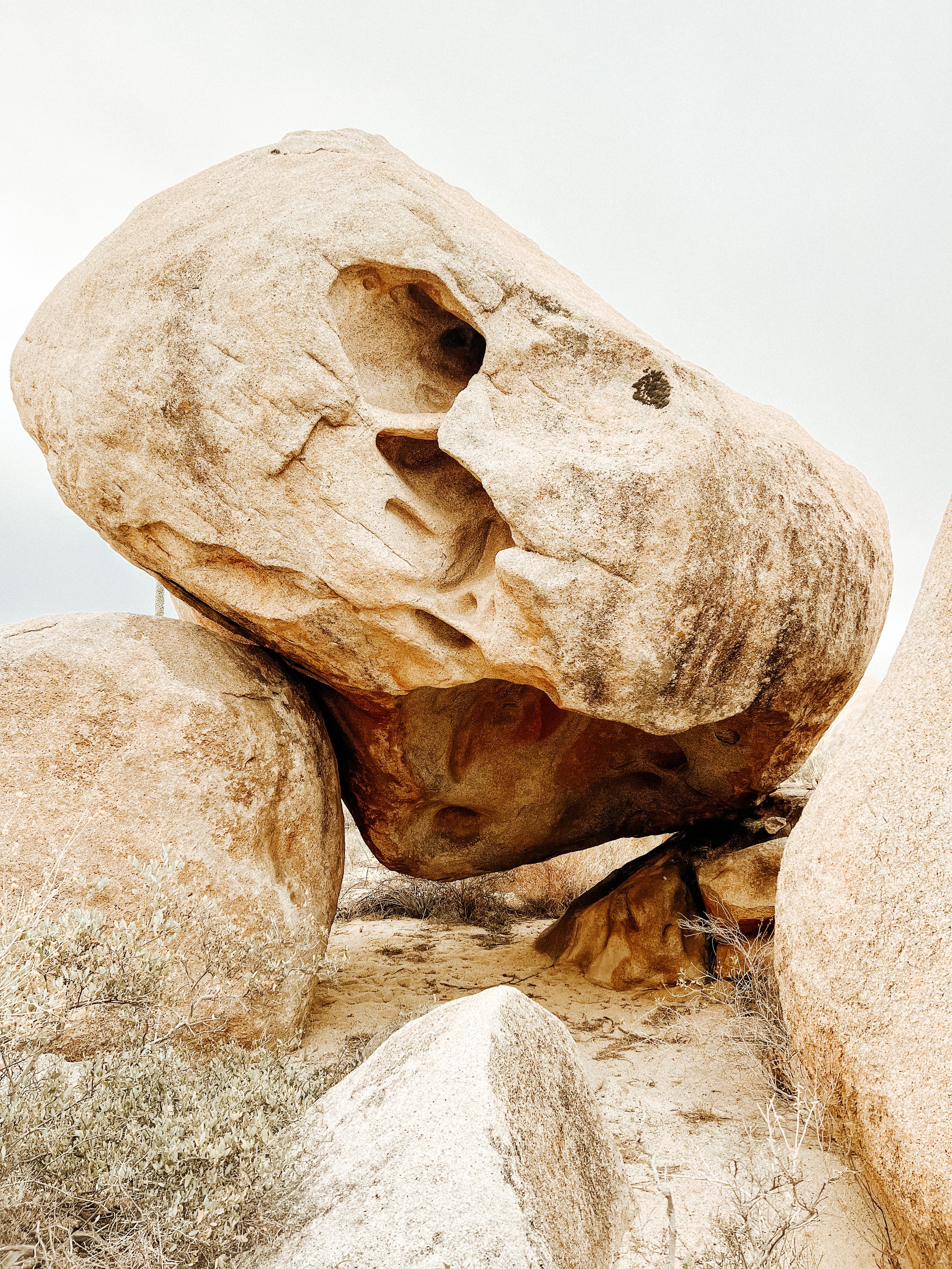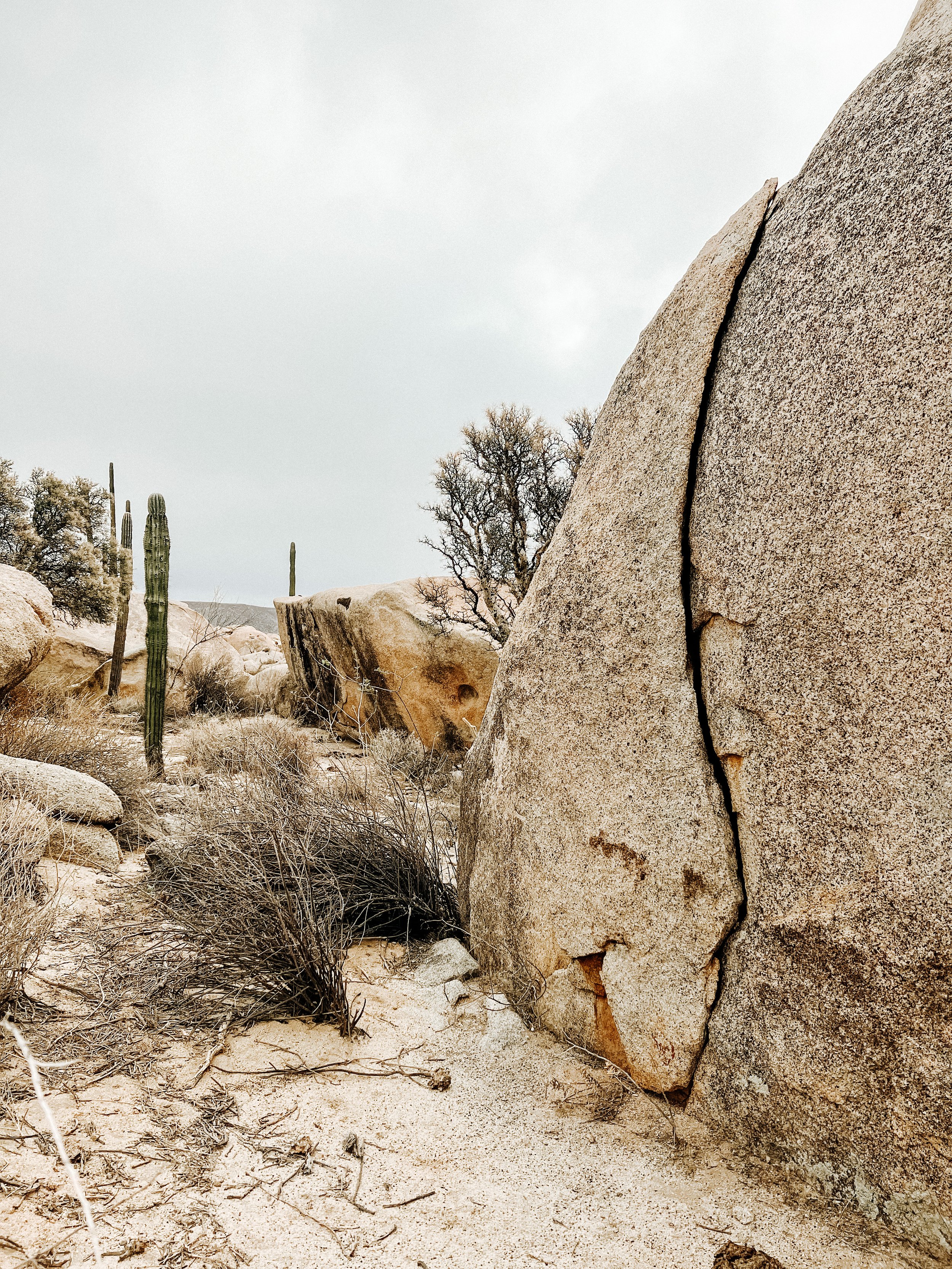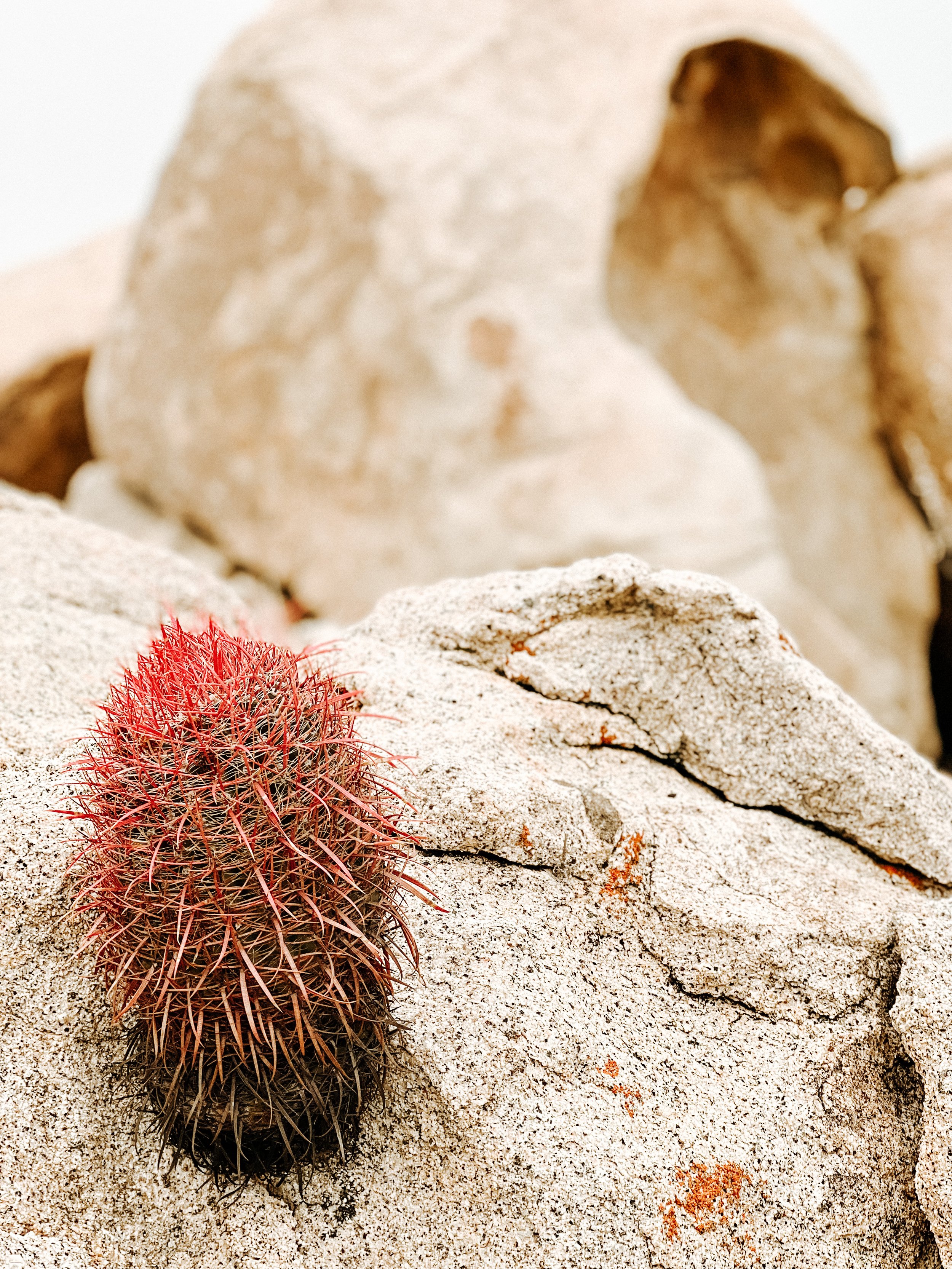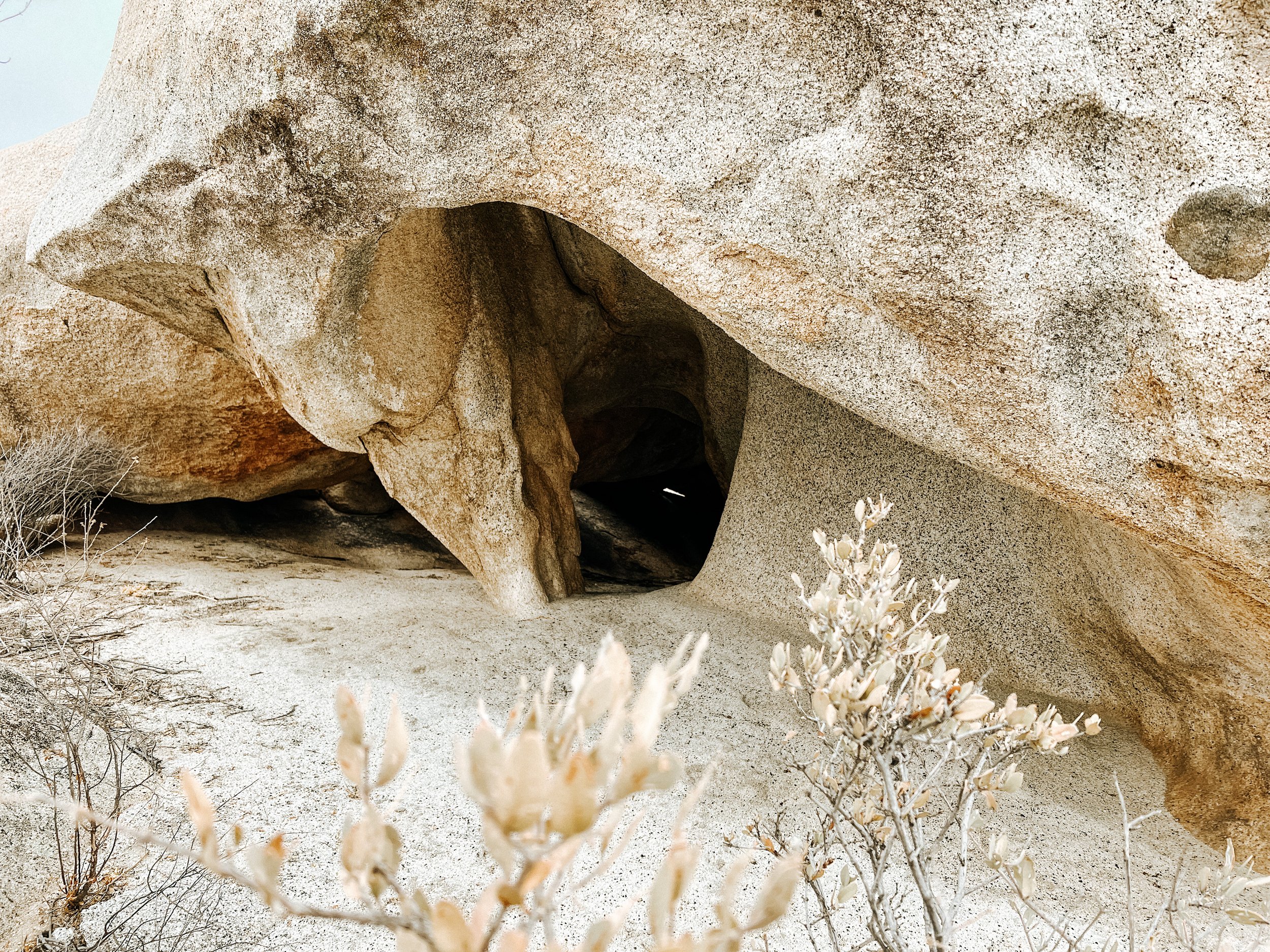Travel: A Camping Guide for Baja California Mexico
Camping in Cataviña, Baja California, Mexico.
Road trip through Baja California, Mexico
18 days stretched through Baja California, Mexico is a small taste of the rugged beauty this land has to offer. Slow is the way to savor the ride and really touch the silence that its Nature holds. The true gems are often the reward of adventurous hours down dirt roads. If there is one lesson this slice of time offered, it was that Nature re-attunes the whole body. The thick silence of the desert, the drum of waves on coastal shores were sweet reminders to breathe deeply and embrace the practice of savoring the present.
I don’t consider myself a travel writer, but I often find that my enthusiastically answering messages from friends and strangers who have questions about my journeys. While most content on this website is focused on wellness, I do believe travel is integral to widening perspective, understanding and appreciation for the world. To me, sharing the journey is part of paying appreciation forward. I love the community that is co-created from strangers in far corners of the world walking the same path dressed in their own experience. And I’ve been wildly grateful for the suggestions others have passed along.
So here’s the run down of my brief explorations of Baja California, Mexico.
If you’re stumbling upon this article and we haven’t met, it may be helpful to name that this is written through the lens of a BIPOC woman raised in the U.S. Naturally, there will be bias to my experience. My kind of travel is the rugged kind. I live out of my van, love getting as close to the dirt, the breeze and the elements, teach yoga and meditation, and guide the practices of Ayurveda, Ancient India’s “science of life.” This is a trip taken by nature lovers, rock climbers, and outdoor enthusiasts.
Here is the itinerary: 18 days of beaches, wildlife, camping & climbing
In my opinion, travel works best when you prepare to let plans flow. It was December and this year, the weather in the north wasn’t ideal for climbing (rain, snow, cold fronts)…so the bulk of the trip turned into a southern journey of beaches, snorkeling, water sports and whale sightings.
The whole itinerary is ideal if you are camping and craving the southern coastline:
Border crossing to San Felipe
San Felipe to Punta Chivato
Punta Chivato to La Paz
La Paz to Playa Tecolote
Playa Tecolote to Todos Santos
Todos Santos to Playa de Frailles {via Cabo San Lucas}
Playa De Frailles to Playa Tecolote near La Paz
Playa Tecolote to Playa el Coyote outside Mulege
Playa el Coyote to San Quentin
San Quentin to La Rumorosa
La Rumorosa to Border Crossing
Driving on Highway 1, Baja California, Mexico
Road Trip Prep
The rig: My partner and I took our 4WD truck with a camper on it. I saw rigs of all sorts, including Promasters, Sprinters, Astrovans and Westfalias. If you have all terrain tires, that is ideal. Pack a spare, a shovel to dig yourself out, and if you’re the kind to worry about gas, an extra gallon container for the long desolate stretches on the 1.
Mexico Tourist Card + Car Insurance
For the majority of short-term visitors (up to 180 days) you are required to get a Mexico Tourist Card (also known as Forma Migratoria Multiple or FMM). This costs is roughly $30 USD. Easiest way is to fill it out online and print it before you cross the border. Here is the link.
You are required to get Mexican Car Insurance. We purchased ours from BajaBound - quick to get a quote. (We insured the rig at $19,500 and paid $324 USD for 18 days).
Border crossing
Going to Baja, we crossed at Andrade (East of Mexicali) and literally rolled through. No wait. The officers did not ask for our tourist cards, nor did they search the vehicle. I read that wait can be long at more popular crossings such as Tijuana or Mexicali.
On your way back into the U.S. use this website; it gives you live wait times for each border crossing back. For speedy crossing, you may consider investing in a SENTRI pass which gets you in the expedited lanes. Heads up - don’t let Google take you the ‘fastest’ route if you don’t have SENTRI - it’ll put it you in these lanes, and you can face up to a $5k USD fine!
Things to be mindful of when driving in Baja
The road conditions: The major highway that runs north to south is the 1. In the north and on many long stretches of the 1, the road is narrow, often without a shoulder. Edge awareness is key. The eastern highway in the north is the 5. From my understanding it was recently completed in 2020. It’s far more spacious than the 1 and had a very nominal toll fee. I imagine the southern highway system seems more tourist traffic, as these roads were wider. Overall the major highway roads were well maintained.
Military Checkpoints: are all over this skinny strip of Mexico. Typically they ask you where you are coming from, why you are in Baja and where you are going. Sometimes they ask to search the rig, other times they wave you through. Twice they wrote down the license plate number. Once they asked for ID. It all depends on the day :) Best practice is to be polite, allow any search requests and you’ll cruise through quickly. You may even find some comedy in the whole experience (one officer pulled out my “SheWee” a funnel that many van dwelling females use to pee :)
Night driving: the unanimous rule is “don’t do it.” Between free roaming cows, animals, skinny roads with a small margin of error, it’ll be a more easeful experience to tackle the distance with daylight, especially if you’re on the 1
Sand driving: if you’re not use to this terrain, or haven’t navigates a vehicle through much snow, you’ll want to keep an eye out for soft sanded beaches that your tires can sink into. Getting stuck is no fun and most Baja Car Insurance covers you on paved roads. Make sure you have a shovel in case you need to dig yourself out. You can always take a little air out of your tires if needed.
Refilling water: many towns have a purified water source. Refilled 20 gallons of water for for 50 Mexican Pesos (approximately $2.50 USD).
Driving down the Eastern coast of Baja, California, Mexico - along the Sea of Cortez.
In-Depth Itinerary: Camping through the Baja
Took the tour in December. Due to the cold and rainy weather, we logged long days up front to get to the south and opted for a slower return. There is a mix of free and paid camping throughout the Baja.
I searched for camping spots on the fly and referenced two resources: freecampsites.net and iOverlander app for some insights and reviews on spots. Beaches are technically public land and free for camping, though there are many that have established camping sites or RV facilities and charge.
Day 1: Crossed the border to San Felipe
Filled up the gas tank in Arizona (cheaper than Cali prices) and crossed at Andrade.
Drove a quick 2.5 hours down to the coastal town of San Felipe. Perched on the Gulf of California just a few hours south of the border, this town is a popular beach getaway for folks. Lots of paid beach camping with a range of facilities (approx 200 pesos or $10 USD) and set up for rigs of all kinds. We stealth camped and got a sunrise start on big drive ahead.
Day 2: San Felipe to Punta Chivato
Fill up the tank for a 10-hour drive through desert. Smooth and beautiful, desolate at times. Took the 5 down the east coast and stopped at small beach called La Poma, with incredible volcanic rocks of red and charcoal color. Whipped up lunch and continued on the way.
The 5 merges weaves to the West side and merges with the 1. Prepare for a change in the road conditions change. Spacious lanes dwindle to skinny, shoulder-less roads. Hunker down for the haul through the desert and get yourself a good audio book or tunes. Sweet desert forests with cacti of all flavors keep the drive interesting. Eventually the 1 cuts across the Baja strip back to the east passing through Tres Virgines Volcanoes. If the trip were longer, I would’ve loved to stop and hike them. Once through the mountains, you descend onto a stretch the hugs the Sea of Cortez.
Camp: Free camping on the beach just south Punta Chivato and the Baja Pool Beach House, about 15 minutes off the main road - the highway 1. This area appears to be a slice of upscale vacation spots. Choose your sand wisely if you don’t have beefy tires.
Camping on the Sea of Cortez, near Punta Chivato
Shells and fossils of Baja
Day 3: Punta Chivato to Paz
Another long haul to land in Baja Sur, this drive has no shortage of blue hues and beaches. In fact, the beaches all have their own enticing air from shallow coves and little islands to out crossings and more. All have camping, kayaking, sailing and sup opportunities.
Finally made it to La Paz and camped out at Playa El Tecolote just 30 minutes east of the city.
Camp: at Playa El Tecolote a great camper’s beach, take your pick of waterfront views or nestle amongst the sandy vegetation. This area felt safe, comfortable and very much akin to BLM camping in the U.S. There is no cell reception but word on there street is that you can use the restaurant’s WiFi and bathroom for pesos. Sunset and sunrise are the feeding times for the seagulls. Take a seat because the show is ridiculous, choreographed dive bombs and all.
Camping at Playa El Tecolote, La Paz, Baja Sur
Day 4: Explore the turquoise waters of Balandra Beach
Spent the day in the crystal clear waters of Playa Balandra, a natural preserve of sheltered coves surrounded by small white sand dunes and beautiful rock. Absolutely recommend this if you’re seeking rest and relaxation. The water is a surrealistic color of calm. Arrive early to get a spot, the parking lot is small and there are visitor limitations due to COVID. Take a stand-up paddle board out to explore the coves or wade and swim across. You’ll likely have a private beach to yourself. Seems like a lot of visitors enjoy walking over to the Mushroom Rock and posing with it :) or hiking a very short 5 minutes up to the to of the cliff for news.
Camp: Technically you are allowed to camp here. And it is free. But at the cost of the infamous Baja bugs that stealth their way through screen protectors. We attempted to camp here and surrendered in absolute, itchy defeat by midnight. Drove back to Playa El Tecolote and dropped into easeful sleep.
Balandra Beach, Baja Sur, Mexico
Camping at Tecolote
Exploring the small coves of Balandra Beach
Wading through the shallow, clear waters of Balandra Beach
Day 5: Drove to Todos Santos
A short drive to the picturesque town of Todos Santos, referred to as a Pueblos Mágicos or ‘Magic Town’. This is a popular tourist destination with cobblestone streets, artisan markets, tequila samples, restaurants, surfing and more. You’ll notice a more eclectic clientele, and in turn steeper prices than other spots in the Baja. That said, if you have some gift shopping to do, this is a good spot to stop.
Camp: south of Todos Santos at Perdito Beach {free}. It was beautiful but we were next to a bar blasting shitty music into the wee hours of the morning. Two other friends recommended this beach spot, but had been here years before the bar transferred ownership. Maybe would rethink camping here but beautiful nonetheless. Lots of early morning fishes.
Todos Santos, Baja California Mexico
Day 6: Drove from Todos Santos to Cabo Pulmo
Originally the plan was to head to Cabo San Lucas, but as we rolled into the big city with cruise ships and 5 star resorts we opted to bail. I’m sure there is plenty of sight seeing, eating and relaxing to do, but we’re on the remote train so we continued up the eastern cape.
On the drive leaving Perdito Beach we saw whales in the distance. During the winter months they migrate to the area. We pulled over and watched a few travel down the coast.
We stopped at Playa Difunito, an amazing beach just east of Cabo San Lucas. Here we whipped brunch, dipped in the ocean and did a little snorkeling here too. Would absolutely put this on the camping radar for the future.
Alas we wrapped up our drive just south of Cabo Pulmo at Playa Los Frailes.
Beach stop at Playa Difunito
Fresh papaya in Baja California
Camp: at Bahia de Frailes, the Monk Beach, another popular and free camping beach for outdoor enthusiasts. This beach protected by the winds which makes it ideal for many reasons. It’s also a popular spot for snorkeling trips. With abundant marine life, clear waters and epic star gazing, this spot is not to be missed.
Sunset camping at Playa Los Frailes, The Monks Beach
Day 7: A day of snorkeling and swimming with sea lions at Playa Los Frailes, The Monk Beach
Spent most of the day snorkeling and paddle-boarding at Playa Los Frailes. Skip the $40 USD tours, bring your own snorkel and swim or sup out to the north side of the beach. Beautiful fish, puffers, angels, and schools of other interesting colored marine life all dwell in these far cliffs. If you’re unsure where to go, you’ll likely see a couple boats bringing snorkel tours to spots. Follow them :) Snorkeling and sea lions! Go in the earlier part of the day, the afternoon can get a bit windy.
Snorkeling along the rocky shore of Playa Los Frailes
Snorkeling off the shore, Playa Los Frailes
Sea lions sun-bathing at Playa Los Frailes
Beach at Cabo Pulmo, Baja Sur
Day 8: Drove to Playa La Ribera
Another beautiful beach with soft white sand and solitude. The town itself was a great place to re-stock on fresh vegetables, gas, purified water and an ATM. The wildlife on the east cape of Baja Sur is magical. Enjoyed a morning yoga practice accompanied by jumping fish and three playful dolphins that swam along the coast.
Camp: at Playa La Ribera {free}. Quiet, peaceful, recommended!
Day 9: Drove from Playa La Ribera back to Tecolote via the coastal town of Barriles
From Playa La Ribera we took a 30-minute detour to visit the town of Los Barriles .
The town of Los Barriles is another small coastal getaway perched on Las Palmas Bay. It’s known for kiting, biking, fishing and sun-seeking. Here you’ll find shops, restaurants, spa services and the quintessential R&R luxuries of a beach destination. It’s Stopped in Vida Spa for massages and they were absolutely incredible. The masseuse incorporated essential oils, checked in with my pressure desires and was in tune with my body. This town is also another spot for shopping (with tourists in mind) Picked up some incredible hand woven and dyed pillow cases from a street vendor for $25 - each, made in Oaxaca.
Continued the drive back to Playa El Tecolote outside La Paz.
Camp: Playa El Tecolote, La Paz.
Day 10: Playa el Tecolote, La Paz to Playa El Coyote
Began retracing steps back to the North. Continued the beach tour to the perfect cove of Playa El Coyote just 7 hours North.
Camp: We sent two nights on the beach. This was the only camp site we paid for {200 pesos a night or $10 USD}. It’s primitive, with some cabanas and pit toilets but the cove itself is gorgeous. Rigs from tents and vans to fully equipped RV’s stopped here. The perks? Beautiful waters great for leisurely kayaking or a sup adventure, small islands to explore or scope out your own beach. The cons? Paying, and the fact that the camp/beach is next to the highway so if you are light sleeper, know you’ll likely hear trucks rolling through the night. In December, the sun dips behind the ridge mid afternoon, so for more sun pick a camp spot on the southend.
Stand up paddle-boarding at Playa El Coyote, Baja California, Mexico
Sunset at Playa El Coyote, Baja California, Mexico
Day 11: Playa El Coyote to Cataviña
Another big day of driving. Stopped at Laguna de Ojo Liebre in hopes of catching sight of the whales. Recommended by a dear friend, here is where the whales come to spawn and nurse their young. However, the season is January to March. Rolled in end of December to a ghost town of a campground, completely desolate except for a lone coyote wandering in the sea brush. No whales had arrived yet but if I find myself here during season, will absolutely stay for awhile. The campsites appear to be well maintained with many cabanas and fire pits.
Fill up gas before leaving… Guerrero Negro, Baja Sur. It’s a long stretch of desert.
Camp: off the dirt roads between km markers 162 - 170. Similar to traveling down a US Forest Road, the dirt roads weave through boulder fields and a sea of cirios. There were a few fire pits, lots of protected spots to nest up for the night.
Day 12 - Explored the boulders of Cataviña
This is a sparsely developed climbing area with a handful for sport and trad routes, as well as boulders. Consider it a create your own adventure (or first ascent) kind of place. There is a guidebook with routes, but we spent the day following curiosity. Simply a beautiful place to break up the drive and explore the mystical ancient rock, even if climbing isn’t on the agenda.
Camp: We could have easily camped here another night, but ended up driving about an hour north to the coast near San Quentin.
Day 13: Explored Valle de Guadalupe, wine country of Baja en route to CaÑon Tajo
A big chunk of prime surf breaks are scattered the west coast near Ensenada. We broke up the drive from San Quentin to Cañon Tajo with a stop in Valle de Guadalupe, Baja’s wine country.
Valle de Guadalupe is located about 90 minutes south of the border, Valle de Guadalupe is a region with a microclimate ideal for growing red wine grapes. In addition to the U.S. tourists, there were many Mexican tourists exploring the area and indulging in its food and wine. There are over 100 wineries in the area. Could easily be a couple-day stop for the wine lovers. Snagged breakfast at Cocina De Doña Estella, which has a reputation for being the critically-acclaimed hole-in-the wall and enjoyed a delicious breakfast and beverages for two, paying pesos equivalent $15 USD. Enjoyed a wine tasting for $10 USD and carried on towards the mountains.
Continued the drive to La Rumorosa and into the wilderness of Cañon El Tajo and arrived just before sun down.
Day 14-17: Explored Cañon El Tajo
This was the whole inspiration for the trip. The original plan was to spend the majority of the trip climbing the granite domes of El Tajo.
Fellow climbers, you can dig up some beta from Mountain Project here. This is adventure climbing at it’s finest. Many routes reserved for those willing to quest into the unknown.
Camp: Followed directions on Mountain Project to Base Camp. There were a handful of camping spots with a few fire rings created.
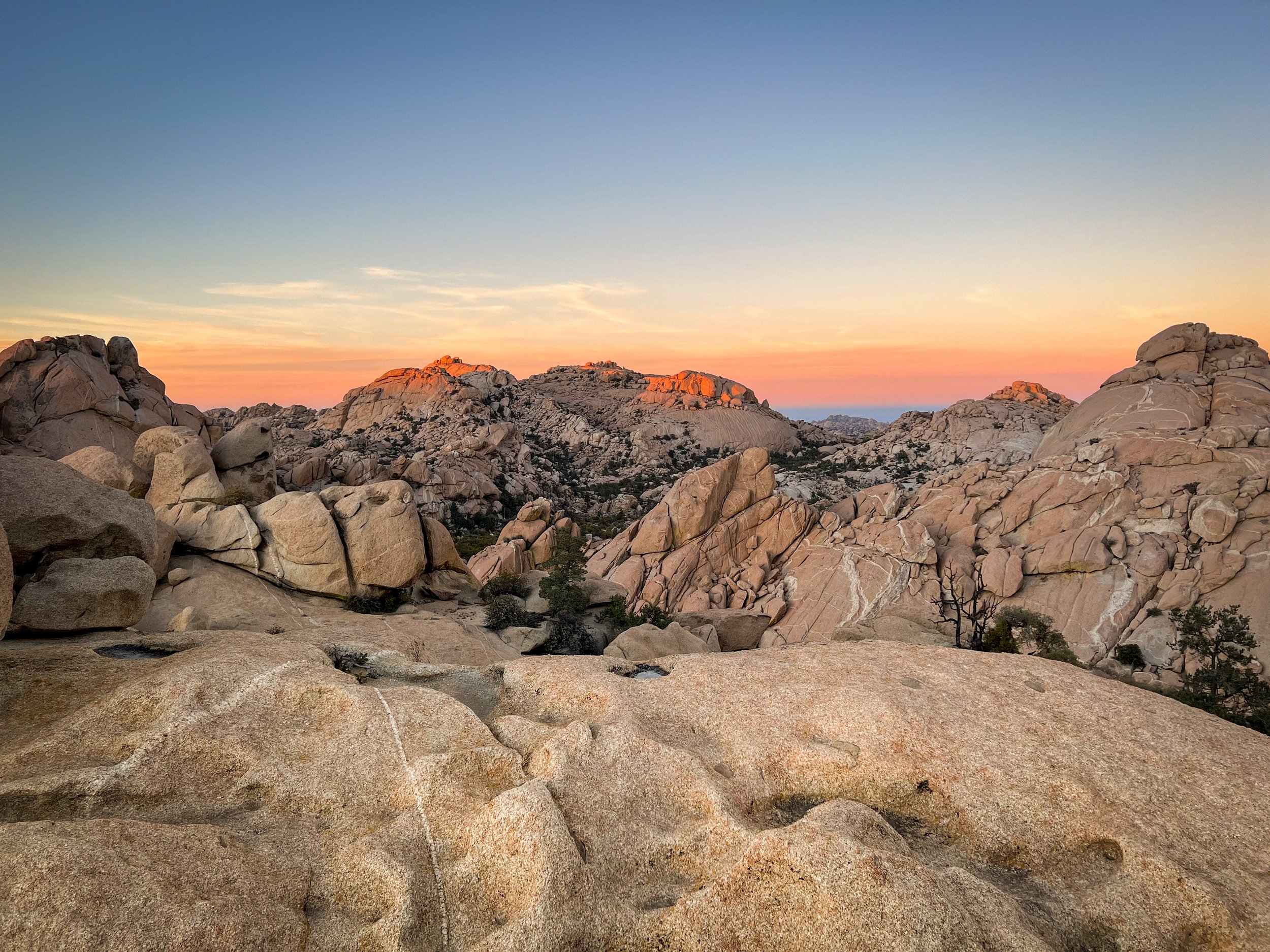

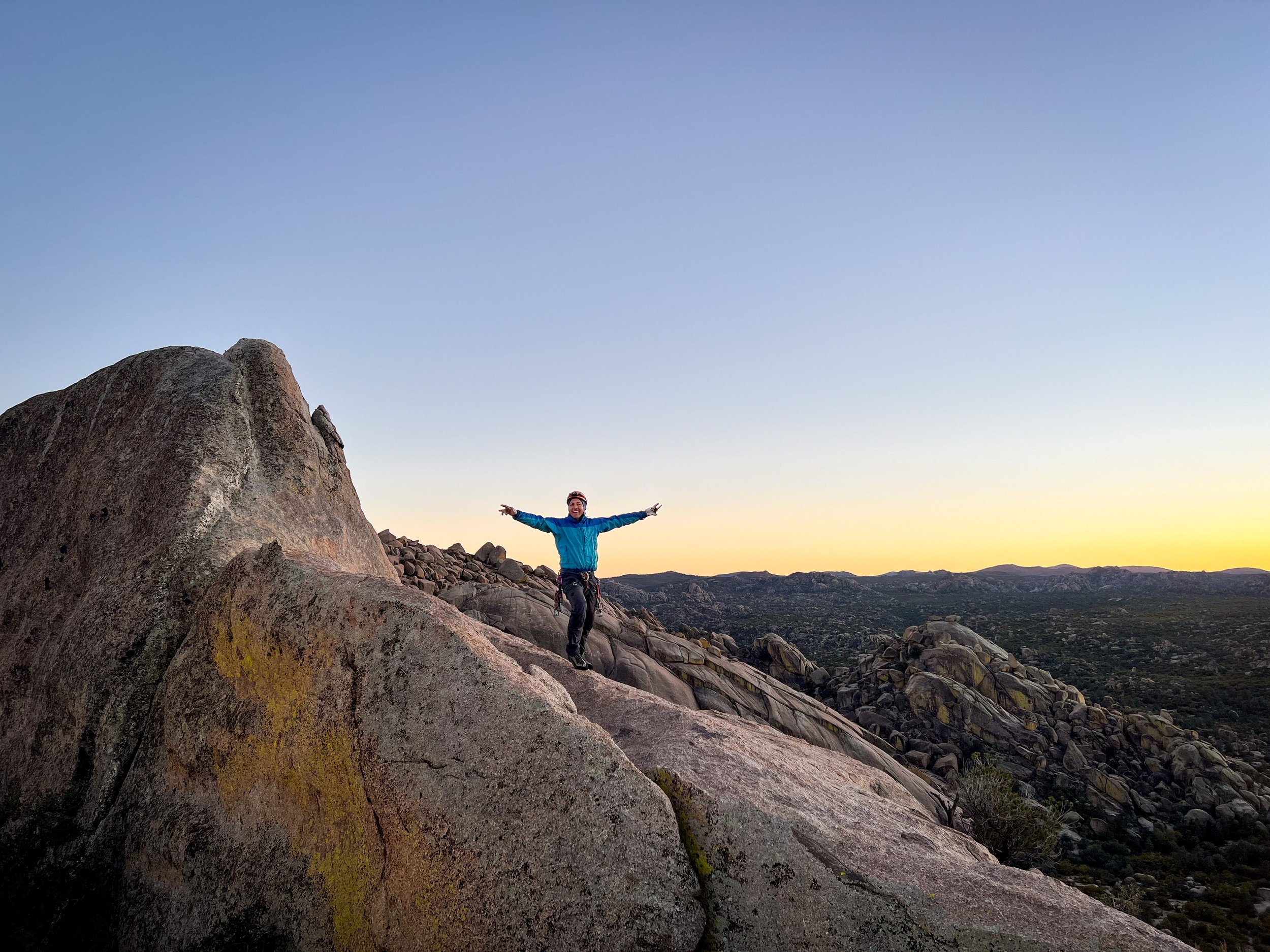
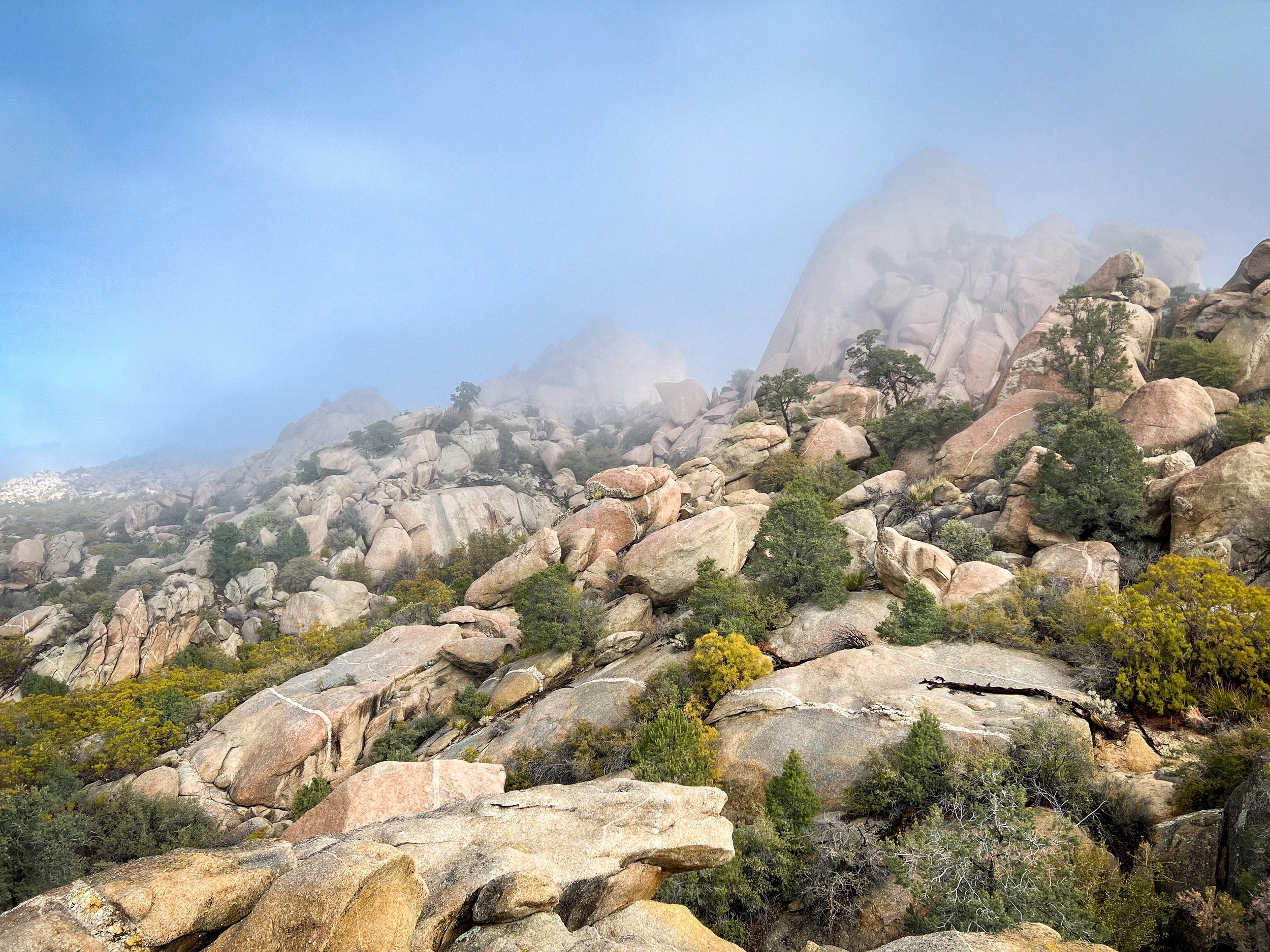
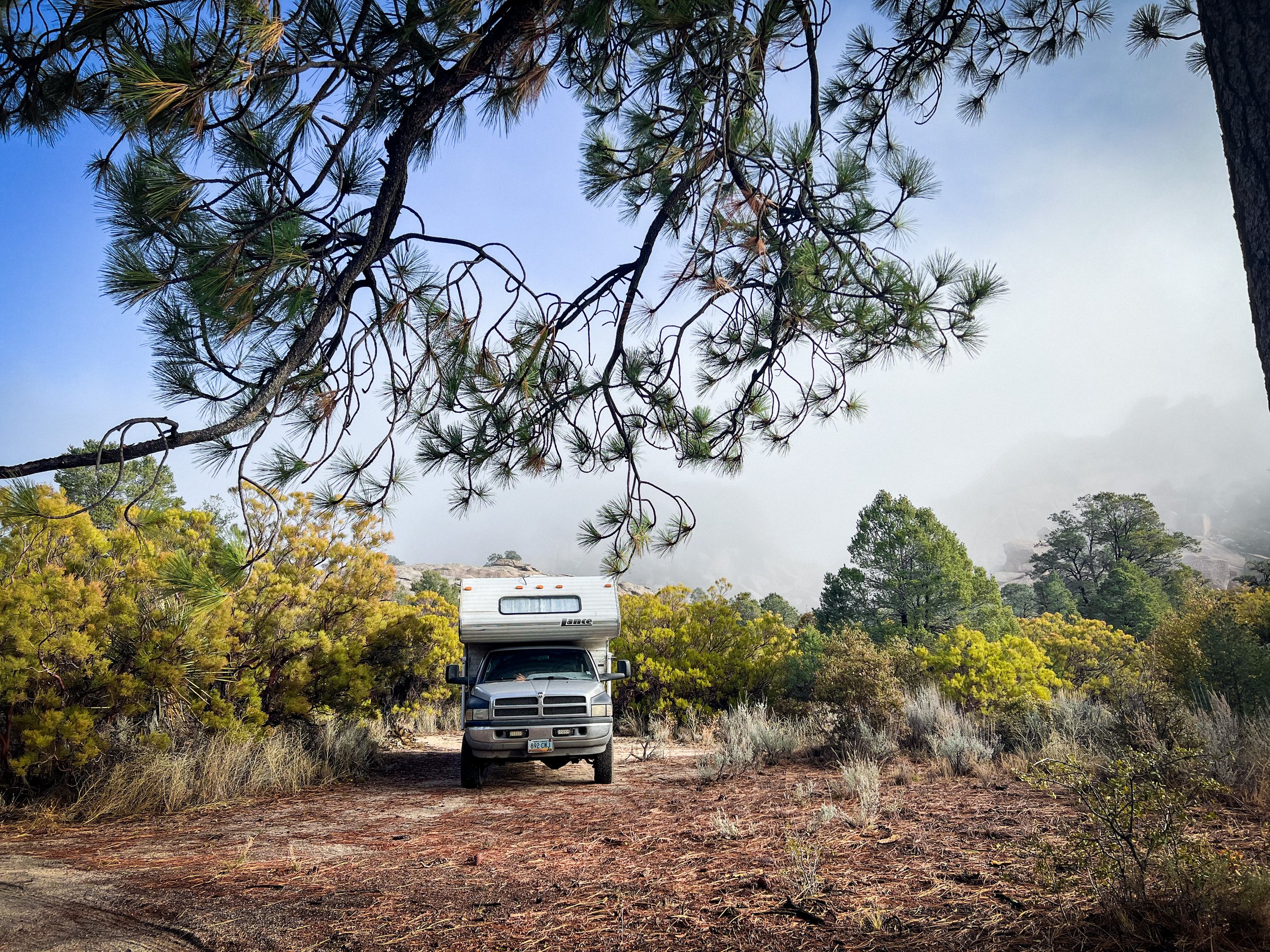
Day 18: Returned to the U.S.
Last day we enjoyed the morning at Cañon El Tajo and took the easy drive to cross at Mexicali. Stopped for some local, tasty tacos (only one kind offered) for less than a $1 each at Tacos Lalo.
Made the mistake of allowing Google to lead us into the SENTRI lane despite not having a pass. They let us through this time but not without fair warning of the $5,000 fine that can occur if it happens. Neglect it twice and the fine goes up to $10k so be heads up.
Alright, hope this guide was helpful!
xx
Gaby








